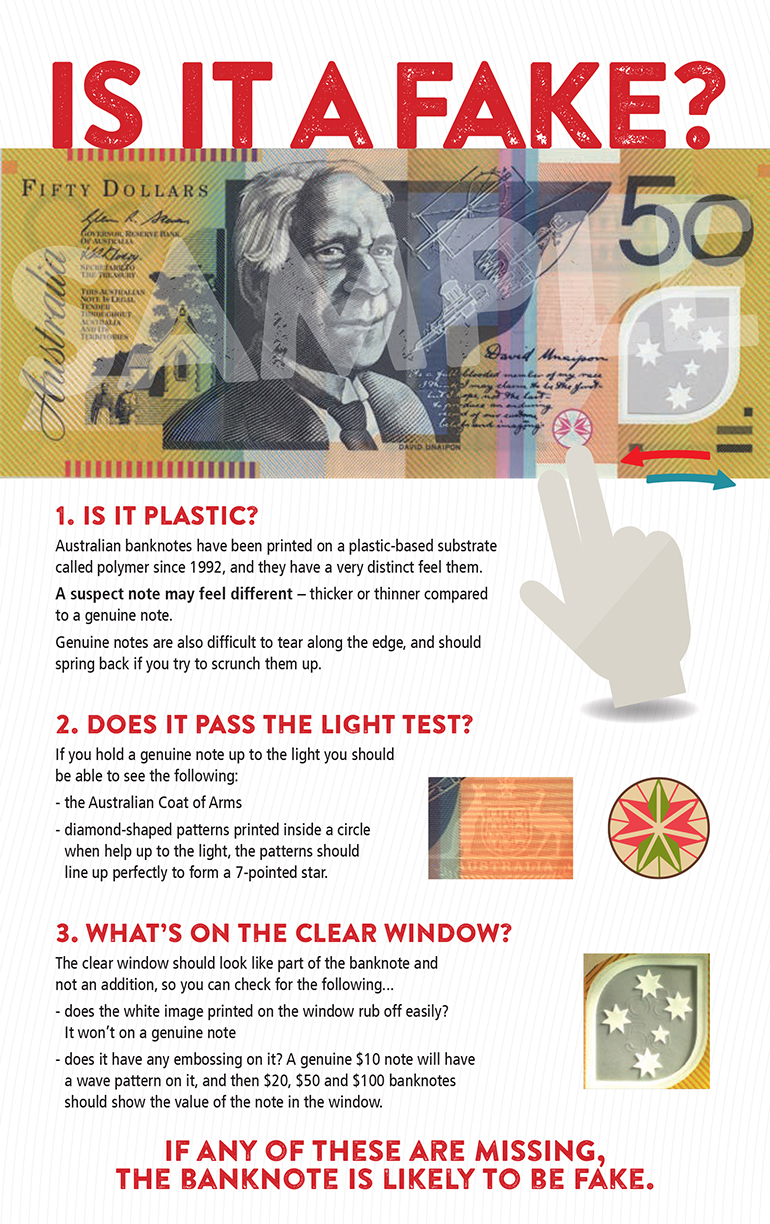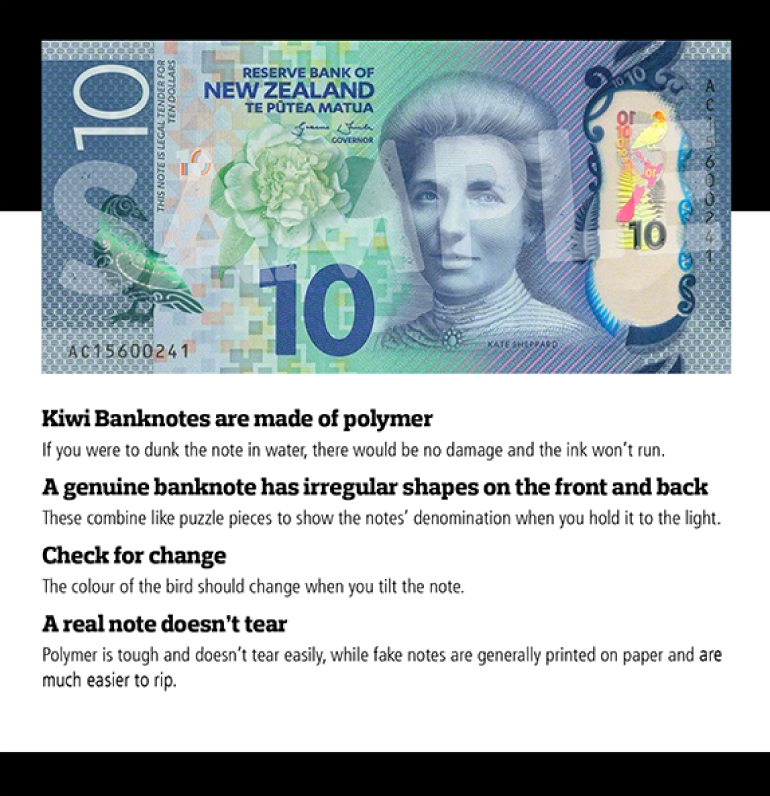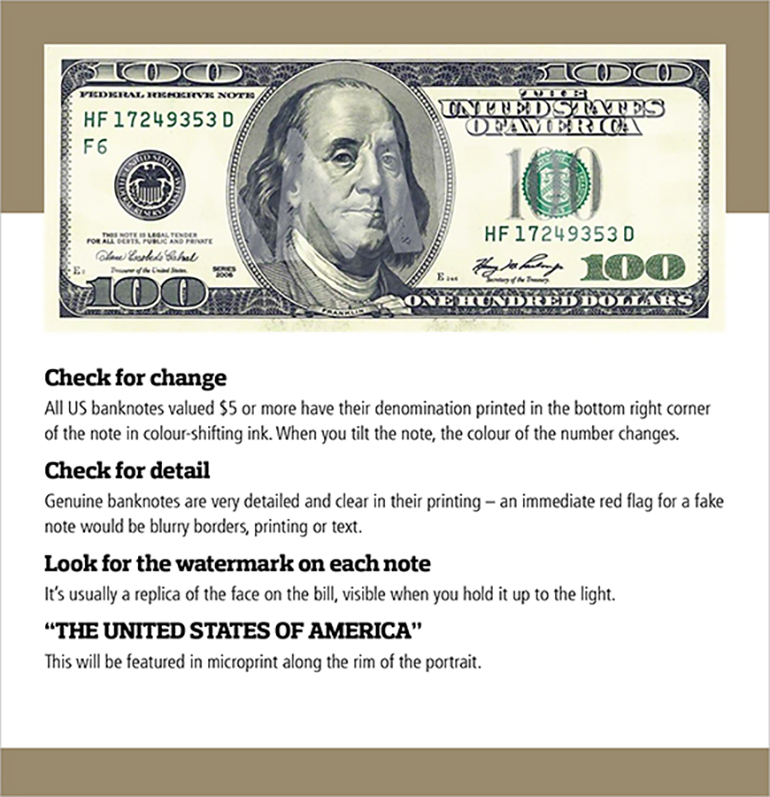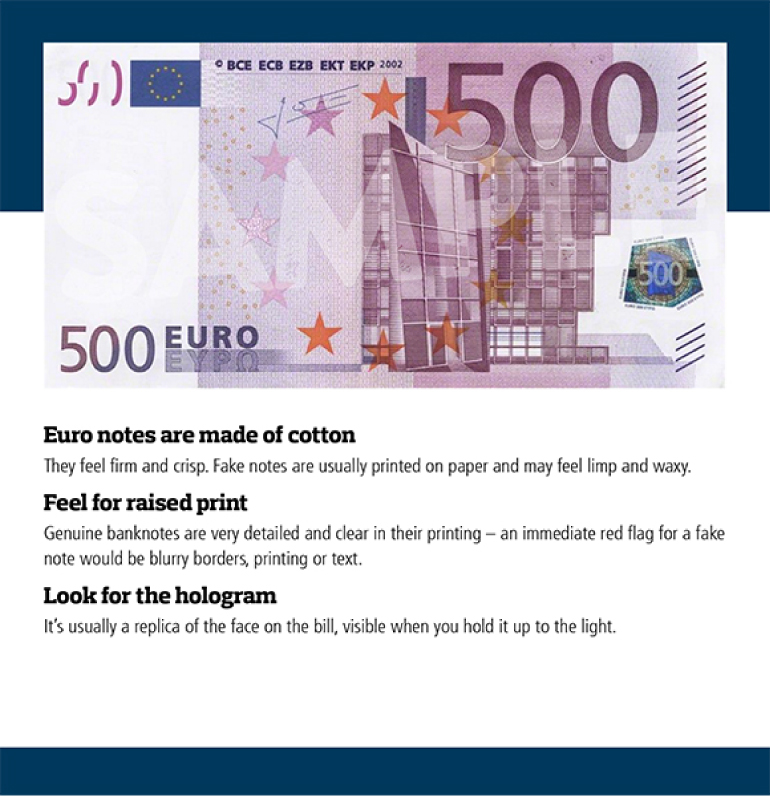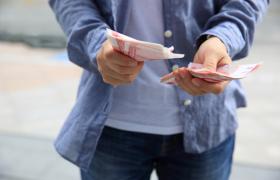Quick Contact

22nd June 2017
Think you could spot a fake banknote against a real one?
Currently, there are about 1.5 billion Australian banknotes in circulation around the country, worth almost $73 billion. These banknotes are armed with many features designed to combat counterfeiting attempts, but do you know what they are?
In Australia, counterfeiting currency is an offence under the Crimes (Currency) Act 1981, and offenders can face penalties of up to 14 years' jail. But unfortunately, those people that fall victim to this crime are essentially being robbed; they can’t be reimbursed for those counterfeit notes once they have been handed over to the State or Federal Police.
Whether you’re at home or travelling abroad, we think it's important for you to know how to spot a fake note so you can protect yourself from falling victim to this crime.
Learn how to spot counterfeit cash in Australia and throughout the world with these tips.
How to spot a fake Australian banknote
But also look out for:
Material
Aussie banknotes are made from plastic, hard to tear along the edge, and easily return to their shape after being scrunched up. A fake note may feel thicker or thinner than a genuine note.
Light Test
When held up to the light, a genuine banknote will have the Coat of Arms and diamond-shaped patterns inside a circle.
Dark printing
Genuine banknotes are produced with a special raised ink that you can feel with your finger. If you can't feel this, the note may be suspect.
Print quality
The background printing on a real note should be sharp, so you can check for any irregularities in the printing, like less clearly defined patterns, thicker or thinner lines or colour differences.
Micro-printing
On a genuine note you should be able to see tiny, clearly defined words with a magnifying glass. These would be on the top left corner of a $5 note, and near the portraits on the other notes.
UV light
If you hold the note under a UV light, the serial numbers and a patch on the notes that shows their value should fluoresce - the rest of the note shouldn't.
Common Myths
There are also few myths out there about how to spot a fake banknote, so we wanted to clear these up for you too.
Myth #1 Notes Without the Name Printed Below the Portrait are Counterfeit.
That is not necessarily true. The names of the people in the portraits were only added to the banknotes printed from 2002 and onwards, so anything printed prior to this may not have this feature. You can see the year the note was printed in the serial number - the first two digits represent the print year. For example, 99 is a note printed in 1999, and 03 is a note printed in 2003.
Myth #2 The Governor's Signature Always Appears Above the Signature of the Secretary to the Treasury.
Again, this is not always the case, as the order of the signatures changed in 2002, so some notes may have them in a different order to others.
Now that you know the myths versus the facts and what security features to check, if you do happen to spot a fake Australian banknote, you do have the right to refuse to accept it. But if some do come into your possession, you should try not to handle them too much and store the notes in an envelope; make a note of any relevant information (like how the notes came into your possession) and then report it to the State or Federal Police.
If the notes turn out to be genuine, you will be reimbursed their full value. But unfortunately if they are fake, you'll lose out on that money. Hopefully, these tips on how to spot a fake banknote will prevent it from getting that far.
How to spot a fake New Zealand banknote
All New Zealand banknotes have the same security features, so you can look for any of these on any of the denominations.
How to spot a fake US banknote
There are a number of security features included in US dollar banknotes, some only visible with UV lights or magnifying glasses But here are a few you can check quite easily:
How to spot a fake Euro banknote
Each of the Euro banknote denominations have a different colour and image, but they do share common security features to help you tell a fake note from a real one:
How to spot a fake British banknote
The UK currently has paper banknotes, and some new polymer notes in circulation. They do share some security features, but many are unique to the different types of banknotes.
On both the paper and the polymer notes:
- The printed lines should be sharp, clear and free of smudges
- You should be able to feel some raised print on the notes, across where it says "Bank of England"
- On real banknotes, there is microprint under the portrait of the Queen - it should have the value of the note in both letters and in numbers, which you can read with a magnifying glass
On the paper notes, you should be able to see a metallic thread embedded into the paper - when you hold a real pound note up to the light, this should then appear as one continuous dark line.
The new polymer notes have a foil patch on them - when you tilt the note, the words should change. For example, on the £5 note, it changes from the word "Five" to "Pound".
Counterfeiters can often duplicate one or two of the security features of the different banknotes, but very rarely can they duplicate all of them. For this reason, you should try to check a few of them rather than just one or two. And, it will help to compare the suspect note against one that you know is genuine.
If any fake notes do accidentally make their way into your possession, you should report it to the Police as soon as possible. We recommend not handling the money more than you need to; just put it in an envelope for the authorities and try not to touch it again.
Make a note of how the notes came to be in your possession, and pass it all over to the Police (or Secret Service).
Travel Money Oz are the FXperts and are ready to help you take off with more travel money. Discover our foreign currency exchange rates today.
Currency and Counterfeiting statistics and information taken from the website of the Reserve Bank of Australia: https://www.rba.gov.au/publications/bulletin/2017/mar/8.html and http://banknotes.rba.gov.au/assets/pdf/counterfeit-detection-guide.pdf
This blog is provided for information only and does not take into consideration your objectives, financial situation or needs. You should consider whether the information and suggestions contained in any blog entry are appropriate for you, having regard to your own objectives, financial situation and needs. While we take reasonable care in providing the blog, we give no warranties or representations that it is complete or accurate, or is appropriate for you. We are not liable for any loss caused, whether due to negligence or otherwise, arising from use of, or reliance on, the information and/or suggestions contained in this blog.
